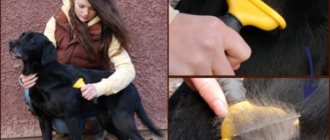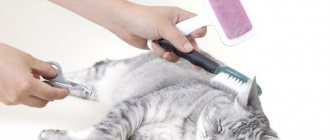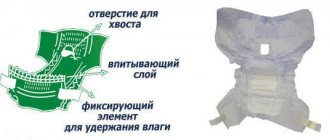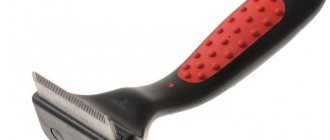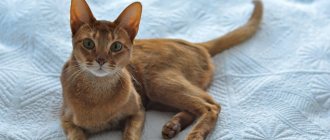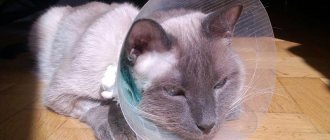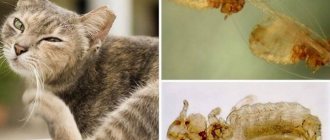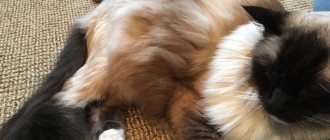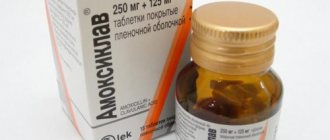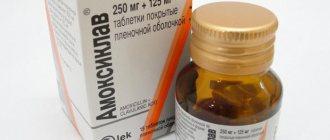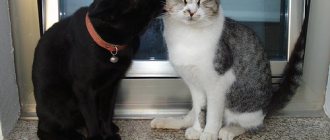The Furminator for cats is loved by many owners of mustachioed and tabby cats. Every owner wants to get rid of annoying animal hair in their apartment. It can cause allergies in humans, and intestinal disorders in cats if it enters the body. The problem becomes even greater if several pets live in the house.
In this situation, a furminator comb becomes a real salvation. Using the device, you can remove almost all fallen hairs from your pet’s undercoat and prevent them from spreading throughout the house.
What is it - a furminator for cats
This invention was invented by a group of American specialists consisting of groomers, breeders and veterinarians. The device is not many years old, but it has managed to enter the lives of cat owners as a necessary item in their grooming arsenal.
The furminator looks like a comb with a handle. The main role here is given to the metal blade, which has an unusual sharpening. It allows you to capture hairs from the very depths of the undercoat and thereby remove almost all lost hair. The device body is made of durable plastic. The holder has an anti-slip rubber cover or rubberized inserts.
Undoubted advantages
When buying a furminator for cats, you need to understand what it is and how it differs from other accessories and combs. This will help you make the right choice. Compared to a slicker comb, the Furminator has several advantages in the fight against hair loss.
So, why do you need a furminator for cats with such a variety of grooming accessories:
- It removes dead inner undercoat. Conventional combs remove only the top layers and do not reach the undercoat, which can accumulate for a long time, becoming entangled in the long pile. The Furminator helps remove the hard-to-reach inner layer that can be so difficult to comb out.
- Does not spoil the structure of the coat. Despite the metal teeth, the Furminator does not damage the fragile cat skin and fur structure. It gently removes undercoat without harming the cat.
- Prevents the formation of tangles. The inner undercoat is difficult to comb out with combs, and in long-haired breeds this can cause increased formation of tangles.
- The cat eats less of its fur. When licking, a cat swallows a lot of hairs, and during the molting period their number doubles. This negatively affects the pet's gastrointestinal tract and can cause intestinal obstruction. By removing the inner undercoat with a Furminator, the owner helps the cat cope with excess fur and improve its health.
- During the process itself, the grease is evenly distributed. As a result, owners note that the animals' fur becomes shinier and smoother. She looks healthy and well-groomed, like after a trip to the groomer.
Perhaps one of the advantages is indirectly the ability of the furminator to keep the house clean. The less the cat sheds, the less often you need to collect hair throughout the house.
Operating principle
To understand the principle of operation of a special comb, it is enough to imagine a modern trimmer. Only the furminator does not cut the hairs, but lifts them so as to capture the small pile from the animal’s undercoat. The owner needs to remove the hairballs from the device and throw it in the trash. At the same time, living hairs remain absolutely intact and unharmed due to the correct arrangement of the teeth. The procedure is not complicated, but it does require a little skill and time.
To remove almost all excess hair from an animal (up to 90%), it is necessary to carry out 3-4 procedures, and sometimes even less, during the molting period.
The device is durable because its blades do not bend or break, as happens when using a regular cat brush. The animal's skin is not injured. The owners assure that their pets tolerate the procedure well - for them it is absolutely painless.
Why is a furminator better than a regular slicker brush or comb?
The Furminator combs out up to 90% of the cat's unnecessary undercoat, prevents the formation of tangles and does not damage the pet's guard hair. Helps reduce the shedding period by half. Experienced cat owners will agree that an ordinary slicker dog cannot do this. In addition, during the process of combing, the cat's skin is saturated with oxygen, which significantly improves its health: the activity of the sebaceous glands increases, the fat layer is evenly distributed over the surface, protecting the epidermis from negative external influences and making the fur more shiny. With constant use of the device, the cat's coat improves significantly, which is especially important for show animals.
Types of instruments
There are several models of furminators, and it is best to choose the best option taking into account the breed, health status, coat and the amount of lint that falls out. Cats should be combed with a high-quality furminator, so as not to spoil the animal’s coat. There are only three main types of tools.
For long-haired individuals
For cats with long hair, use a furminator with long teeth located at a large distance from each other. This is due to the fact that in long hair the undercoat gets tangled faster and much more strongly. The process causes the formation of tangles, which subsequently become impossible to comb. Manufacturers take into account the age and weight of the cat, and also produce special models for kittens.
The product has a special designation – “Large”, which indicates that the model is intended for adult cats with long hair. There are also two subspecies: for cats with hair lengths up to 10 cm and for those individuals whose hair length exceeds 12.5 cm.
For short-haired individuals
For cats with short hair, there are three modifications, including the weight of the animal. These modifications are designated as “Small” (small), “X-Small” (very small) and “Medium”.
Depending on the hardness of the cat's hair, there are varieties for hard or printed (soft, plush) coats. A consultant at a pet store will help you choose the appropriate model.
According to technical qualities, there are “Classic” and “Deluxe” levels. When choosing between these types, you will notice differences in the quality of the material from which the handle is made, and the presence on the Deluxe model of a button for automatically cleaning the comb from combed hairs.
For certain breeds
For British and Scottish Shorthair cats there is a special furminator suitable specifically for this breed. It is designed for the characteristic plush fur. The model is selected according to the weight and size of the cat.
For Abyssinian cats, combs are suitable that go deeper into the coat to comb out the most inaccessible layers of the undercoat. These are usually 4 cm wide ridges.
Gradation by size
The labeling of values varies among different manufacturers, but generally comes down to 4 categories:
- small – (Small, Mini);
- medium (Medium, Midi);
- large (Large, Maxi);
- universal – 3(4) in 1.
The most compact option is suitable for small animals and kittens. The width of the comb of the device does not exceed 3.3 centimeters. For adult fluffies weighing 5-6 kilograms, you need to choose a furminator with a blade width of 4.5 to 7 centimeters. There are also offers for owners of large specimens: the blade width of the “Maxi” model is 10 centimeters.
Universal models are sold complete with several attachments. This allows you to change one blade to another depending on the breed of your pet. Typically, such things are used by professional groomers or owners of several animals.
Existing analogues and how much they cost
There are a huge number of analogues of the original Furminator. Structurally they are the same. They have a handle and a head with a comb. The only difference is the length and frequency of the teeth and the width of the comb. The following analogues of the original instrument have proven themselves to be effective:
PTS
A brand in demand among cat owners. The cost of the furminator is quite affordable, and at the same time it also efficiently removes dead hair. Its cost is in the range of 1100 - 1200 rubles.
Ideal for British cats, easily dealing with thick undercoat. The disadvantage is the regular - at least once a year - replacement of the comb.
Foolee
The tool has many positive reviews, including from professional groomers and breeders. Not only does it have a convenient handle curve for working. The Furminator removes 95% of shedding hair. The cost of the tool starts from 1900 rubles and reaches 2700 rubles for some models of this brand.
Hellopet
Tool made in Taiwan. Recommended for long-haired cat breeds. Its feature is a modified comb. The price is low, starts from 1000 rubles. If you wish, you can buy a classic straight comb (this is a universal option) or take a curved one (it provides better combing).
Ozone
Where can I buy an original furminator or its equivalent? You can purchase the instrument “on the ground”, i.e. at any pet store. If you wish, you can search for the desired model in the online store. The choice of devices is huge. Prices start from 1500 rubles. Sometimes you can get good discounts and buy a tool much cheaper. Quite often it is sold as part of some kind of set, for example with shampoo.
Furminator for cats
Criterias of choice
By comparing all the available types of tools with the characteristics of your pet, you can confidently make a choice. What you need to determine before purchasing:
- pet's hair length - it is better to measure with a ruler;
- weight and dimensions - if in doubt, choose a furminator with a narrower blade to reach the lint in hard-to-reach places;
- how much money are you willing to spend - the Deluxe class costs one and a half times more, but it is incomparably more convenient.
Pay attention to the country of origin. Do not buy questionable products - they may be of poor quality and therefore dangerous for your pet.
How to choose and what criteria to consider
To buy a quality device, you need to know what characteristics to look for. This:
- Length of teeth. The quality of grooming depends on the length of the comb teeth. It should match the cat's fur. Short and dense teeth will not be able to reach the undercoat of long-haired breeds, and long and sparse teeth will not be able to capture hairs of short-haired breeds.
- Ridge width. A small comb will take a very long time to process a large cat, while a wide comb will be inconvenient to comb a small one.
- Quality of teeth. In a high-quality furminator they are even, smooth and shiny. Any irregularities, other than those provided for by the design, gaps will cause rupture of the guard hair and injury to the skin.
- Handle ergonomics. It is more convenient to work with a tool whose handle has a rubberized textured surface and a convex end. You also need to focus on your own feelings. If the device lies comfortably in the palm of your hand, your hand will not get tired during the process.
- Injection button. It starts a mechanism that automatically removes hairs from the comb. But such furminators break quickly, unlike monolithic models. For the latter, cleaning the comb from fluff must be done manually.
Manufacturers also offer models with removable combs. They differ in the length of the teeth and the width of the comb. This tool is well suited for caring for pets of different sizes, weights and even breeds. But it has a significant drawback - the head becomes loose due to frequent changes. The furminator becomes inconvenient to operate and requires replacement.
Disadvantages and contraindications
Before using a furminator for cats, you need to remember that this is a device that has contraindications and some disadvantages. It is best to consult a professional before using it on your pet. In some cases it can cause harm:
- The Furminator should not be used if the cat has lesions on the skin, as well as subcutaneous mites, dermatitis or fungal infections.
- Some “hairless” breeds do not need to be combed with a furminator (Canadian Sphynx, Don Sphynx, Peterbald, Ukrainian Levkoy, elf and others).
- In addition to short-haired breeds, there are breeds for which combing with a furminator is contraindicated due to the almost complete or complete absence of undercoat (Burmese, Laperm, Devon Rex, Cornish Rex, Oriental and others).
If any doubt arises, you should consult a specialist. Damage to a cat's skin takes a long time and is difficult to treat, so it is better to protect her from this trouble.
Who should not use the furminator?
The use of a furminator is not advisable for cats of those breeds that do not have an undercoat or the coat has its own characteristics. These include:
- la perm;
- Devon Rex;
- Turkish Angora;
- sphinx;
- Singaporean;
- oriental;
- Burmese;
- Cornish Rex;
- tiffany;
- Balinese shorthair and others
Also, do not forget that the use of the furminator is absolutely contraindicated in the presence of any skin diseases, wounds and cuts.
How to use a furminator for cats
Before using the device, you need to study it thoroughly: be sure to read the instructions. It is also recommended to check the serviceability of the device - inspect it from all sides. There should be no burrs on the blade.
Treatment frequency
It is especially useful to use the device during molting animals. At this time, you need to comb the fluffy often - every 1-2 days. Later, when the acute period of hair loss has passed, treatment with a furminator can be carried out less frequently - about once a month.
In summer, the procedure will be needed a little more often: a clean coat and the absence of excess hair will allow the animal to maintain normal heat exchange on hot days. Focus on the pet's condition and its comfort.
Algorithm of actions
Consider where you will place the animal - ideally it should be a table, couch or something similar covered with a non-slip material. It is advisable to have a light source and a wool basket nearby. Don't forget to prepare your pet's favorite toy - he may need to be distracted and calmed, because not all cats tolerate hygiene procedures well.
The animal's skin and fur must first be examined. Under no circumstances should you comb out if there are wounds, cuts or pustules. Postpone the procedure until the sores heal.
A long-haired cat must first be bathed to remove dirt from the hairs. Clean wool is the key to the success of the operation. The pet needs to be dried a little, combed and checked to ensure there are no tangled hairs or tangles. After this, you can start combing.
It is necessary to work with the furminator only in the direction of hair growth. Movements must be careful. Pressure and pressure on the skin should not be allowed. Sensitive areas (stomach, groin) should be treated with extreme caution - carelessness can cause pain to the animal and cause fear of the procedure.
For the first time, in order not to experience anxiety, it is better to go to a groomer and, under his guidance, carry out combing. You can also invite a specialist to your home.
What it looks like and how it works
Furminator is a tool designed for manual combing of wool. The device combines four functions:
- trimmer;
- comb;
- trimming knife;
- slicker
Cats have slightly thicker fur than other pets. This is explained by the fact that from each follicle, in addition to the central axis, two or three additional downy hairs grow, forming an undercoat of varying degrees of density.
If you did not completely cut your pet’s hair with a clipper, but decided to maintain the length of its fur, then the furminator will become the main tool for grooming the hair.
During molting, additional hairs die off, and new ones grow in their place. These excess hairs must be removed. Otherwise, they will constantly crumble, provoke the formation of tangles, and the cat will look untidy.
Classic combs cannot remove dead undercoat. Puffer brushes cope with it, but if used ineptly, they cause injury to the skin.
Furminator - developed by professional groomers. Outwardly, it looks like a men's razor, but the blade is replaced with a comb. The principle of operation is very simple - during operation, only dead hairs of the undercoat are removed. They hook onto the serrations covering the teeth and are pulled out. In this case, the guard hair slips between the denticles and remains intact.
Rules for use and care of the instrument
When you first meet it, it becomes obvious that a furminator for cats is a device that combines different materials. But avoiding this does not become difficult. The simplest rules:
- There should be no foreign objects in the cat's fur - specks and tangles; they must be removed first.
- The device is used only on clean fur, so if the cat gets dirty, it should be washed and dried first.
- After combing is completed, the furminator should be cleaned of hair and the blades should be covered with a protective cap.
With proper use and care, the tool will last for many years (from 5 to 10 years). The main thing is to strictly follow the rules of use.
Pros and cons of combs
The main advantage of the furminator is durability. Strong steel is used to make the teeth, so they do not become dull. Regular combs need to be changed once a year.
Positive qualities include:
- faster and easier combing process;
- in one session you can remove about 90 - 95% of dead hairs;
- the furminator is safe for cat fur, since it does not affect the outer hair and only removes hairs from the dead undercoat;
- the tips of the teeth of the device are blunt, so it cannot injure the pet’s skin;
- Thanks to the special structure of the teeth, the furminator can penetrate deep into the undercoat.
The downside is the high cost of the original tool.
Review of popular models
Among the many models, the main thing is to choose the most suitable furminator for cats, because this device will serve for many years. It should be convenient for the owner and safe for the pet.
Manufacturers and models
The most common manufacturer of furminators for cats is FURminator, because it is the first company to produce such accessories for cats and dogs.
There are other models from various manufacturers:
- Hello PET trimmer brush;
- FoOlee One Medium trimmer brush;
- furminator for cats and dogs of different sizes PetComb;
- Xiaomi Pawbby Anti-Hair Cutter Comb;
- furminator DeLIGHT;
- furminator for dogs and cats TRIXIE;
- furminator for cats Zolux.
It is better to select a model in accordance with the breed and characteristics of the pet. If you are doing this for the first time, enlist the support of experienced friends or trust a consultant at a veterinary pharmacy.
How to avoid buying counterfeits
If you buy a furminator for cats on the Internet, it is not a fact that it will be a successful purchase. The photo may show one product, but they will bring you a completely different one.
To avoid buying a fake, it is better to buy a furminator at a veterinary pharmacy or specialized pet stores. You should always check the packaging, manufacturer and availability of the warranty card.
The Furminator is a great product for owners of short-haired and long-haired cats. It saves during heavy molting and preserves the beauty and health of the pet.
How to comb your pet: what do you need to know about grooming?
It is recommended to do this procedure only 1-2 times a week using a specific brush. After this procedure, particles of dead fur will be completely removed.
When buying kittens, hardly anyone thinks about the need to purchase care products in the first months. However, when the molting period approaches, this issue becomes acute. It is important to accustom your cat to a comb from childhood; in this case, there is the greatest chance of avoiding aggression from the pet, and proper combing will cause a contented purr from a pleasant massage.
There is a variety of Scottish cat breeds - the Scottish Straight, which is very undemanding in care. The appearance resembles a teddy bear, which is why the breed is very popular. The British is an equally popular breed; cats are very clean by nature, since this feature is inherent at the genetic level. However, it is important to properly raise an animal from childhood.
Caring for British cat breeds
Ungroomed fur of an animal can lead to various skin diseases.
There is a lot of lint from such breeds. Due to the fact that uncombed fur often gets tangled, forming dense balls (tangles), it is considered a breeding ground for unwanted microorganisms on the animal’s body - fleas, ticks, fungal infections, which is why careful care is necessary. When wet, the mat does not dry well, which leads to irritation of the skin around it, and also increases the risk of injury to the animal, because a tangled ball of fur can get caught on something and, when unraveling, the cat will be injured. Therefore, it is so important to monitor the condition of your pet’s fur and systematically comb it.
Most owners believe that it is better to clean the apartment one more time than to scratch the cat and be scratched by sharp claws. On the one hand, this is correct, but on the other hand, it is dangerous, since swallowed lint is not removed from the body naturally, but is regurgitated. Insufficient regurgitation and a large number of wool particles clog the cat’s intestines, which, in turn, threatens a trip to the veterinary clinic. There is an alternative method - a specially developed paste used to remove fur hairs accumulated by daily washing.
Kinds
Furminators differ from each other only in the size and length of the teeth. The choice depends on how big the cat is and how fluffy it is. The optimal device for cats is a mini tool, the width of the working surface of which does not exceed 6 cm. The medium and maximum sizes are suitable for especially large breed cats and dogs.
The length of the furminator teeth is determined by the type of cat - long-haired, medium-haired or short-haired. The shorter the pet's coat, the shorter the teeth are required.
© shutterstock
